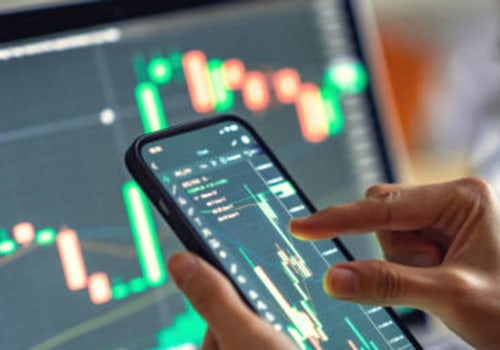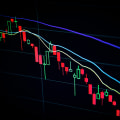Calculating Risk Per Trade
In the world of trading, risk management is a crucial aspect that every trader should consider. One of the fundamental elements of risk management is calculating the risk per trade. By determining the amount of risk associated with each trade, traders can make informed decisions and protect their capital. In this article, we will explore the importance of calculating risk per trade and provide valuable insights on how to do it effectively.
Trading in financial markets involves the possibility of incurring losses. Calculating risk per trade helps traders manage their exposure to potential losses and safeguard their trading capital. By understanding the concept of risk per trade, traders can make more informed decisions and protect themselves from excessive risk.
2. Understanding Risk per Trade
Risk per trade refers to the amount of money a trader is willing to risk on a single trade. It is typically expressed as a percentage of the trader's overall trading capital. Calculating risk per trade involves evaluating factors such as the trader's risk tolerance, position size, stop loss level, and potential reward.
3. Setting Risk Tolerance
Before calculating risk per trade, it is important for traders to determine their risk tolerance. Risk tolerance is the level of risk an individual is comfortable with. It varies from trader to trader based on factors such as financial situation, experience, and psychological disposition. Understanding one's risk tolerance helps in setting appropriate risk levels for each trade.
4. Determining Position Size
Position size refers to the number of units or contracts traded in a single transaction. Calculating risk per trade involves determining an appropriate position size that aligns with the trader's risk tolerance. A general guideline is to risk a small percentage of the trading capital, such as 1% to 2%, on each trade. This ensures that a single trade does not have a significant impact on the overall trading account.
5. Utilizing Stop Loss Orders
Stop loss orders are essential tools for managing risk in trading. A stop loss order is placed at a predetermined price level, and it automatically triggers a market order to exit the trade if the price reaches that level. By using stop loss orders, traders can limit potential losses and protect their capital from unfavorable market movements.
6. Applying Risk-Reward Ratio
The risk-reward ratio is a crucial concept in risk management. It compares the potential profit of a trade to the potential loss. A favorable risk-reward ratio means that the potential profit outweighs the potential loss. By analyzing the risk-reward ratio, traders can assess whether a trade is worth taking and adjust their risk per trade accordingly.
7. Adjusting Risk per Trade
The risk per trade should be adjusted based on market conditions and individual trade setups. In highly volatile markets, it may be prudent to reduce the risk per trade to account for increased price fluctuations. Conversely, in stable markets with favorable trading conditions, traders may consider increasing their risk per trade to capitalize on potential opportunities.
8. Evaluating and Monitoring Risk
Calculating risk per trade is not a one-time activity; it requires ongoing evaluation and monitoring. Traders should regularly review their risk per trade and assess its effectiveness in protecting their capital. By analyzing the outcomes of trades and adjusting risk levels accordingly, traders can refine their risk management strategies and improve their overall trading performance.
9. Implementing Risk Management Strategies
Calculating risk per trade is just one component of a comprehensive risk management strategy. Traders should also incorporate other risk management techniques such as diversification, asset allocation, and risk mitigation through proper portfolio management. By combining various risk management strategies, traders can create a robust framework to safeguard their trading capital.
10. Benefits of Calculating Risk per Trade
Calculating risk per trade offers several benefits to traders. Some key advantages include:
Preservation of capital: By managing risk per trade effectively, traders can protect their capital and reduce the impact of potential losses.
Consistent trading approach: Calculating risk per trade helps traders maintain a consistent and disciplined approach to trading, ensuring they do not take excessive risks.
Increased profitability: By managing risk effectively, traders can enhance their profitability over the long term and achieve more stable returns.
Trading in the foreign exchange market can be a lucrative venture, but it also involves risk. Calculating the risk per trade is an important part of effective money management and can make or break your success in the forex market. In this comprehensive overview, we'll explore the key considerations for calculating risk per trade and provide some tips on how to maximize your trading profits. Understanding risk per trade involves analyzing potential losses, understanding the markets, and developing a sound trading strategy.
We'll look at how to identify and assess risk, as well as the tools and techniques available to help you effectively manage it. Finally, we'll discuss how to use risk management as part of your overall trading plan. The first step in calculating risk per trade is to decide what percentage of your capital you are willing to allocate to each trade. Generally, traders should only risk up to 2% of their capital on any single trade, although this can vary depending on the trader's experience level and risk appetite. Once you have decided on the percentage of your capital you are willing to risk, you can calculate your risk per trade by multiplying the percentage by the size of your account.
For example, if you have a $10,000 trading account and are willing to risk 1% of it on each trade, then your risk per trade is $100. Next, you need to decide how much leverage you will use on each trade. Leverage is a double-edged sword – it can increase your profits as well as your losses. Most brokers offer leverage up to 1:500 or even 1:1000, but it is important to understand the risks involved when trading with leverage. Once you have decided on the amount of leverage you will use, you can calculate your position size (in lots) by dividing your risk per trade by the stop loss size (in pips).
For example, if your risk per trade is $100 and your stop loss size is 50 pips, then your position size will be 0.2 lots ($100 / 50 pips = 0.2).Once you have calculated your position size, you need to decide on your entry and exit points. This will depend on your trading strategy and should be based on technical analysis or fundamental analysis. After that, you will need to calculate your potential profit and loss by multiplying the position size by the difference between the entry and exit points (in pips). For example, if your position size is 0.2 lots and you enter the market at 1.2000 and exit at 1.2010, then your potential profit will be 10 x 0.2 = $2.Finally, it is important to note that calculating risk per trade does not guarantee success in Forex trading.
You should also consider other factors such as market conditions, news events, economic indicators, etc., in order to make informed trading decisions and minimize risk.
Why Calculating Risk Per Trade Is Important
Calculating risk per trade is an essential concept in Forex trading. It helps traders stay within their comfort zone when trading in the Forex market, and allows them to determine how much capital they can allocate for each trade without overexposing themselves to large losses. When combined with a solid trading strategy and money management plan, calculating risk per trade can help traders achieve better returns over time. Risk per trade is the amount of capital allocated for each individual trade that is determined by the trader's money management strategy. Accurately calculating risk per trade is important for traders as it helps them limit losses and improve returns over time.In conclusion, calculating risk per trade is an important concept in Forex trading. It helps traders stay within their comfort zone and allocate capital for each trade without overexposing themselves to large losses. Combined with a sound trading strategy and money management plan, calculating risk per trade can help traders gain better returns over time. Calculating risk per trade is an important part of successful Forex trading. It helps traders manage their capital more effectively and reduce their exposure to large losses.
By understanding how to calculate risk per trade and using sound money management principles, traders can increase their chances of achieving better returns in the long run. Risk management is a vital aspect of trading and is essential for helping traders achieve consistent profits. By calculating risk per trade accurately and using sound money management principles, traders can improve their chances of achieving better returns in the long run.
Calculating risk per trade is an essential aspect of successful trading. By determining the amount of risk associated with each trade, traders can protect their capital and make informed decisions. Implementing risk management strategies, such as setting risk tolerance, determining position size, utilizing stop loss orders, and considering the risk-reward ratio, enhances the overall trading experience. Remember to regularly evaluate and adjust risk per trade to adapt to changing market conditions. With effective risk management, traders can navigate the dynamic nature of financial markets with confidence.
Q1: What is risk per trade?
Risk per trade refers to the amount of money a trader is willing to risk on a single trade. It is typically expressed as a percentage of the trader's overall trading capital.
Q2: How do I determine my risk tolerance?
Determining your risk tolerance involves considering factors such as your financial situation, experience in trading, and psychological disposition. It is important to assess the level of risk you are comfortable with before setting risk levels for each trade.
Q3: What is a stop loss order?
A stop loss order is a tool used in trading to automatically exit a trade at a predetermined price level. It helps limit potential losses and protect a trader's capital.
Q4: Why is the risk-reward ratio important?
The risk-reward ratio compares the potential profit of a trade to the potential loss. It helps traders assess whether a trade is worth taking and adjust their risk per trade accordingly.
Q5: How often should I evaluate my risk per trade?
It is recommended to regularly evaluate your risk per trade and assess its effectiveness in protecting your capital. Ongoing monitoring and adjustment are necessary to adapt to changing market conditions.












Leave Reply